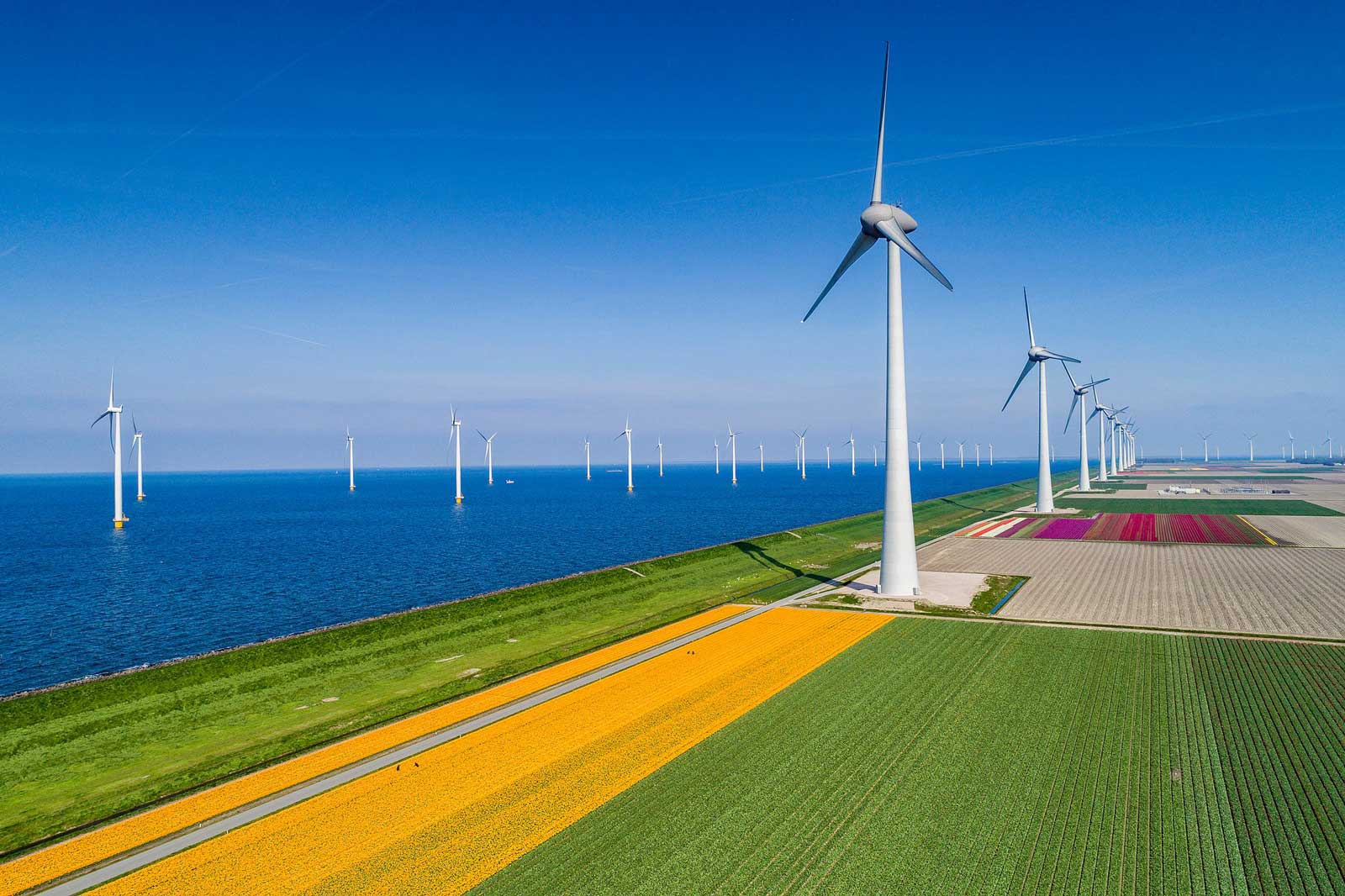Construction work has started: RWE is expanding its wind farm at Wiedenfelder Höhe
03.07.2025

Wind energy has seen significant growth in recent years, with global installed capacity passing impressive milestones and being one of the most competitive sources of energy. According to the International Energy Agency, of the total 830 gigawatts (GW) of wind capacity installed in 2021, 93% were onshore and 7% offshore wind farms. Wind energy must be significantly expanded in order to reach the ‘Net Zero Scenario’ with an annual wind generation goal of 8,000 terawatt hours (TWh) by 2030. For comparison, electricity demand in Europe and North America in 2021 totalled around 8,500 TWh.
Markus Krebber, CEO of RWE AG: “Today’s Global Wind Day celebrates one of our core technologies. Wind energy on land and at sea is one of the cornerstones to making the global energy transition a success and achieving the climate targets. To increase green energies we are investing billions of euros each year in wind power and we are committed to expanding our portfolio in an environmentally friendly way. With this in mind, we have set ourselves ambitious sustainability targets. For example, from 2030 at the latest we will only implement future wind projects that have a net positive impact on biodiversity.”
Sustainability as an integrated part of RWE’s wind business
RWE is one of the world’s major players in renewables and leads the way in advancing sustainability in wind power. RWE is working towards full circularity and net-zero emissions, supporting local communities and the protection of biodiversity. The company has set a net-positive impact target by 2030 for biodiversity for all new assets. To achieve this, RWE is working with scientists and NGOs to create and advance the necessary knowledge to achieve net positive impacts. RWE has also set itself the target of achieving at least 90 per cent of recovery of materials by 2030. Furthermore, the company has set itself ambitious climate targets, in line with the 1.5-degree CO2 reduction path.
A demonstration of innovation and the use of circular materials is evident at RWE’s Kaskasi, Sofia and Thor offshore wind farms, which will be using recyclable blades. In addition, GreenTowers will be used at Thor wind farm, an example of closing material loops by using scrap-metal in the production of components next to green power.
Key sustainability projects that have been deployed at some of RWE’s onshore wind farms include Black Blades in the Netherlands to increase bird protection, the use of blade lift technology to avoid cutting trees at the Selinus wind farm in Italy, and the Orkoien project in Spain, which tests technologies to reduce the impact on the environment during construction.
Onshore Wind at RWE – 17 projects under construction in eight countries
RWE operates more than 200 onshore wind farms worldwide. In Germany, France, the United Kingdom, Italy, Poland, Spain, Sweden, and the US, 17 projects with a total capacity of over 600 megawatts (MW) are under construction. These include the 200-MW project Montgomery Range in Texas.
In fast growing markets, the supply chain is of the utmost importance. RWE recently signed a framework agreement with Siemens Gamesa, securing fixed delivery dates and a structured price settlement for European onshore wind farms. Such agreements between companies are one way to increase planning security for both developers and manufacturers and to support the necessary supply chain build-out of manufacturing capacities in view of expansion targets in Europe and the US.
RWE – an experienced offshore player and floating pioneer
RWE, the number two in offshore wind globally (excluding China), operates 19 offshore wind farms with a pro-rata installed capacity of about 3.3 GW in five countries and intends to more than double its offshore capacity to 8 GW by 2030. Two offshore wind farms, Thor in Denmark and Sofia in the UK, with a total capacity of 2.4 GW are under construction. Offshore wind is gaining momentum in the US where RWE is taking a leading role. In 2022, RWE secured seabed leases in offshore wind auctions off both the east and the west coast, with a total capacity of 3.9 GW (RWE’s share).
RWE’s experience in deploying seabed-fixed offshore wind, combined with its in-house engineering expertise and global approach, means that the company is particularly well placed to become a market leader in floating wind and unlock the large-scale potential of deep waters around the world. To gain early experience and broad technical expertise, RWE is participating in several high-profile floating demonstration projects, each based on a different foundation concept. The demonstration projects are already providing unique insights into the particular challenges and opportunities of this relatively new technology.
Pictures of offshore and onshore wind farms for media use are available at the RWE Media data base (credit: RWE).